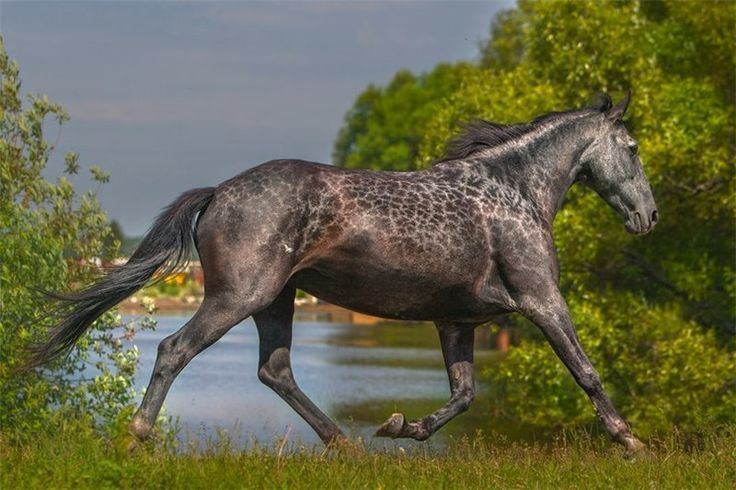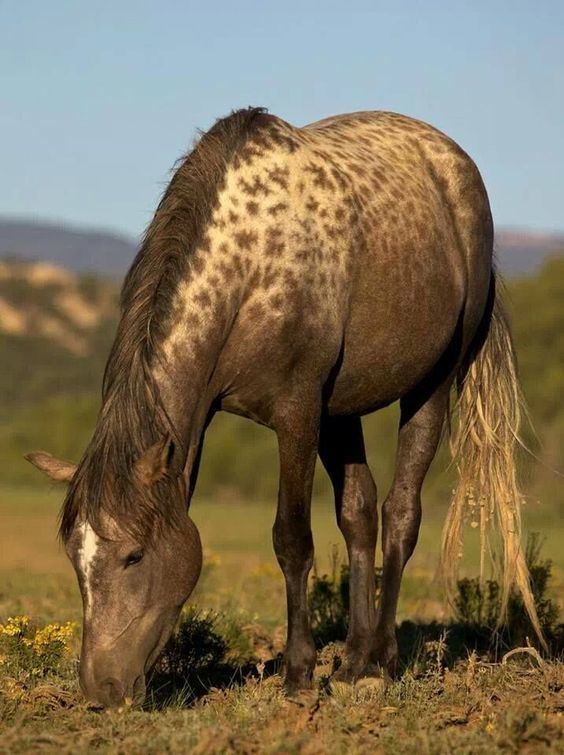Rank Breed | Higher classification Horse | |
 | ||
Country of origin Former U.S.S.R (Russia) Similar Kabarda horse, Russian Don, Budyonny horse, Tersk horse, Orlov Trotter | ||
Horse on elbrus 5642 m 05
The Karachay (Karach.-Balk. Къарачай ат) is a horse breed developed in the Northern Caucasus. It came from highland Karachay at the rise of Kuban. The Karachay is registered with number 9354442 (breeder № 1278) in the official journal of The Ministry of Agriculture of the Russian Federation (Moscow 2016). They are developed by crossing regional horses with eastern stallions. Karachay horses are summered in rugged mountain country where there are large changes in temperature and humidity, and wintered in the foothill and plains with some hay feeding. These conditions made the Karachay horse strong-limbed and sturdy.
Contents
- Horse on elbrus 5642 m 05
- Karachay horses at twin peaks of mt elbrusminging taw
- Breed Characteristics
- History of the breed
- Uses
- Studbooks
- References

Karachay horses at twin peaks of mt elbrusminging taw
Breed Characteristics

The Karachay horse stands 14.3 to 15 hands high. Karachay breeding has focused on creating a breed that is not only fast, but also hardy, obedient, low-maintenance, and able to withstand varied, even mountainous terrain year-round. Their hooves are strong and hard and do not need shoeing if bred and worked properly. They have a long head, often with a Roman nose, as well as agile, alert ears and well-developed whiskers. Karachay horses have a medium long, well-muscled neck, relatively straight shoulders and low withers. The mane and tail are long and thick. The body is strong and straight-backed. The limbs are also strong with generally good joints, bones and short, strong hocks; they occasionally have a tendency to be sickle-hocked, which is typical for mountain breeds. Karachay horses are black or black-brown and usually they do not have any white marks. They grow to a withers height of about 160 cm.

The Karachay horse is inherently good-natured. It is very responsive to the rein and is not prone to acute excitement. This makes it an indispensable to the mountain tourism industry. The Karachay horse has been able to survive extinction mainly because of two things: its high fertility rate and its strong resistance to common horse illnesses. It is a hardy breed that requires minimal supervision.
Average measurements of Karachay horses (Stud farm № 168, 2001/2002).
History of the breed

The Karachay is a breed of riding horse that originated from the north-western regions of the Caucasus Mountains. It was first bred for use in the military and more in agriculture. It has been bred by Karachays around the 14th-15th centuries in the climatic and geographical conditions of the North Caucasus.

Karachay breed of horse was known to Europeans since the 18th century at least. German researcher P. Pallas (1793) wrote: "They grow a small but hardy and hot breed of horses, known for their outstanding qualities". Another researcher, Bronevsky S. (1823), wrote: "They have small, but sturdy breed of mountain horses, known under the name of Karachay horses". Hungarian ethnographer, a member of the expedition of Emmanuel to Elbrus, Jean-Charles de Besse also gave a high evaluation of the breed in 1829: "Karachays ranch fine breed of horses... They are easy on the go and I don't know any other horse breed that is better for ridding on steep slopes and which is so inexhaustible".
At the end of the XIX century there were local stud farms in Karachay where some herds included 500-1000 horses. In the beginning of the 20th century Karachay played a significant role, supplying most of the Kuban Cossack army`s regiments with chargers. Every year Karachay sold about 10 thousands of horses.
In 20-s, during the period of recreation of horse breeding at North Caucasus which took place after the destroying civil war, people worked with Karachay breed according to the plan. In line with this, selective breeding of Karachay horses ensued. The Riding State Stud farm was created in 1927, and the State stud farm (Gosplemhoz) of Karachay horses was organized in 1929 and then reorganized in 1930 into Karachaevsky stud farm № 168, which bore J. Stalin`s name for some time.
In 1935 the first volume of the studbook was established for the mountain breeds, registering 204 Karachay mares. Karachay horse were especially good in the mountains. In the winter of 1935/36 a 3,000-kilometer ride was held in the Caucasus. The time and route of the ride were extremely difficult. Among the participants there were 10 Karachay horse and horses of other breeds. The ride lasted 47 days, on average 64 km per day. In one month the same horses finished a race from Piatigorsk to Rostov, distance of 600 km in five days over very muddy roads/trails.
In 1937 State breeding center was created in Karachay Autonomous Oblast.
In 1943 year J. Stalin deported the Karachays people to Central Asia and the Karachay breed was renamed as the Kabarda breed and the two breeds were combined. But the horses still were breeded in the same lands. After the war they breeded a new type of horses, higher and more sturdy. Karachay horses were exported to other stud farms, e.g. for recreation of Malkinsky stud farm № 34 which began in 1958. There were exported 104 Karachay and Anglo-Karachay mares and 4 stallions from the stud farm № 168. Names "Karachay horse" and "Anglo-Karachay horse" were mentioned again in specialist literature in 1963, but the breed still wasn't separate. Karachay breed was automatically referred to Kabarda breed and so named in the 2-nd, 3-rd and 4-th volumes of the studbooks. In 1980-s the discriminatory decision of referring Karachay horse to Kabarda breed was annulled and Karachay breed was again separate included into the 5-th volume of State stud book. Karachay breed and Anglo-Karachay breed group regained their due place being mentioned in the State stud books and official lists of species of the USSR and Russia in 1990-s.
In 1998 a group of Karachay-Cherkessiya`s horsemen with three Karachay horses ascended the east top of the mountain Elbrus, making an unprecedented act. In 1999 the horsemen ascended west top of the highest mountain in Europe. The Karachay horses’ is thus strong with strong and adapted limbs to climbing mountains. Special credit goes to an expert on horse breeding named Klych Geriy Urusov who was the mastermind of Elbrus conquest on horseback. At the present time Karachay horse is breeded at Karachaevsky (Malokarachaevski) stud farm № 168 and the other stud farms. In 2008, there were about 20 000 horses in Karachaevo-Cherkessiya.
Uses
Karachay horse was at the same time a charger and a draft horse first for Karachays, and then Cossack military forces of The Russian Empire and the cavalry of the USSR were supplied with Karachay horses. The modern Karachay horses and Anglo-Karachay horses can be found in different areas, that is, horse shows, competitions, mountain races, showjumping, tourism, agriculture. A lot of horses were exported outside Karachay. Also Karachay breed was used for developing Tersk horse.
